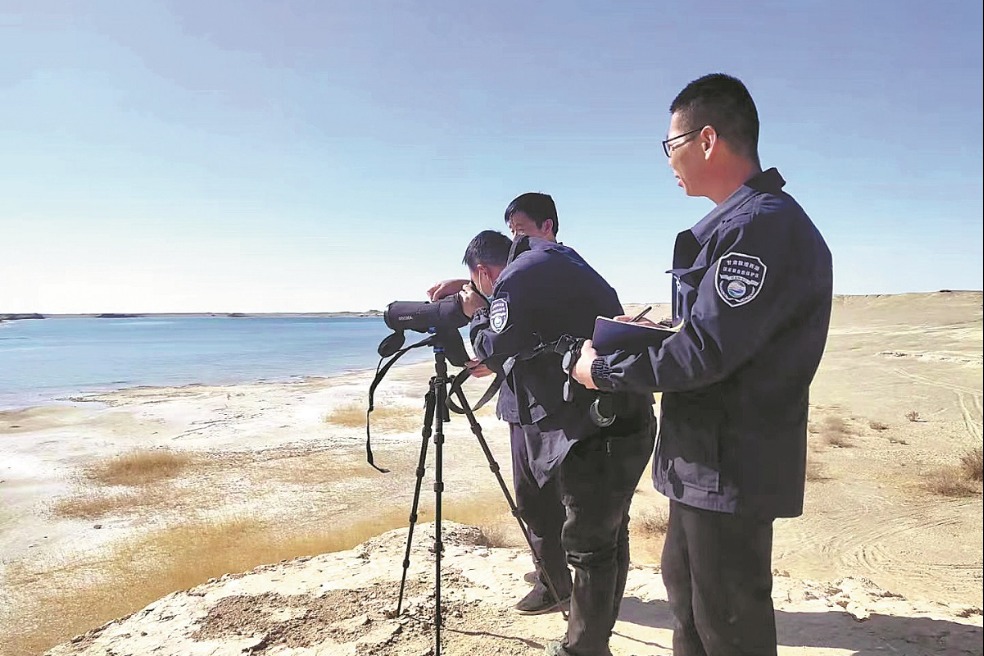Band of brothers battles solitude, wind, searing sun to transform desert
Dedicated rangers in Gansu nature reserve work hard to revive life, ecology


Flowing with life
Less than 100 kilometers to the west of the station lies the infamous Lop Nur, a former salt lake, where biochemist and explorer Peng Jiamu went missing in 1980 — a disappearance that cast the region into the Chinese imagination as a land of mystery, desolation, and drought.
"Not many know that Lop Nur was once part of a salt lake system, fed by the Tarim River from the west and the Shule River from the east," said Lu.
Lop Nur began to rapidly vanish in the mid-20th century, succumbing completely to desertification by the late 1970s. Yet the Tarim and Shule rivers, both lifelines for desert oasis towns and the ancient Silk Road, were not entirely lost. In recent years, significant conservation efforts have markedly improved the situation.
"Dunhuang city, including our nature reserve, lies at the lower reaches of the Shule River. For years, upstream water was so scarce it couldn't even meet farming needs, let alone flow downstream," said Lu. "But that was no longer the case after 2017."
Thanks to renewed water flow, vegetation and wildlife in the area have rebounded. Long-lost bodies of water and reed marshes are reemerging. Migrating waterbirds, now more diverse and numerous, are once again using the wetlands as vital stopovers on their long journeys.
To Lu's greatest relief, the sand dunes now halt wherever grasses take root or wetlands form. "It assures me that what we've endured hasn't been in vain," he said, admitting there were times when nature's reluctance to show signs of recovery had tested his patience.
That patience remains essential. Despite signs of improvement, conditions are still severe in a place where the annual rainfall is less than 20 millimeters.
"The wind is at its most ferocious in April and May," said Lu, who has grown used to sleeping through its unceasing howl. By day, sandstorms churn the earth and sky into a blinding white blur, as if the world has been swallowed by dust.
Contemplating the name "Devil City", a title born from the eerie whistle of wind threading through the jagged Yardang formations, Tian said: "From the reserve's edge, it feels unimaginable. But as you journey deeper, the desert begins to soften. Grassy lakes appear, and golden poplars jolt eyes long dulled by the seemingly unbreakable monotony of sand. It makes you marvel at the fierce yet quiet persistence of life."























